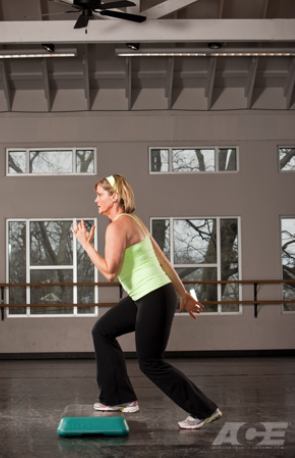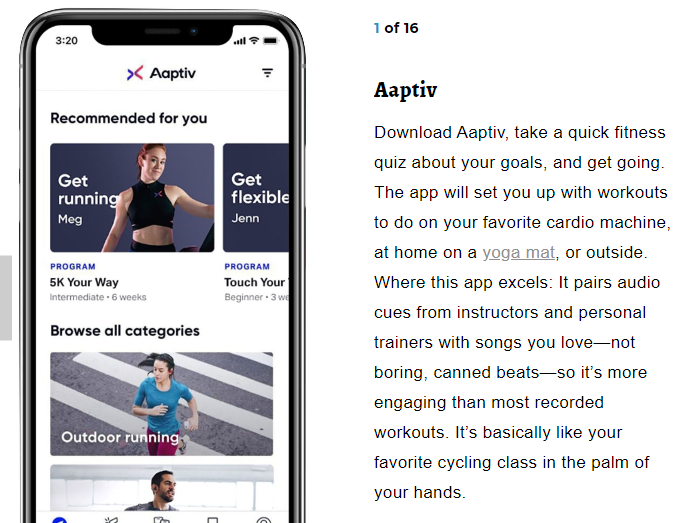
http://www.acefitness.org/education-and-resources/lifestyle/exercise-library/259/ckc-parascapular-exercises

Get the most from your workouts by knowing how to gauge your exercise intensity.
When you exercise, are you working hard or hardly working? Exercising at the correct intensity can help you get the most out of your physical activity — making sure you’re not pushing too hard or too little. Here’s a look at what exercise intensity means, and how to maximize your workout.
How hard should you be exercising? The Department of Health and Human Services recommends these exercise guidelines for most healthy adults:
Your exercise intensity must generally be at a moderate or vigorous level for maximum benefit. For weight loss, the more intense or longer your activity, the more calories you burn.
Balance is still important. Overdoing it can increase your risk of soreness, injury and burnout. Start at a light intensity if you’re new to exercising. Gradually build up to a moderate or vigorous intensity.
For specifics check: www.mayoclinic.org/healthy-lifestyle/fitness/in-depth/exercise-intensity/art-20046887
Heart, joints, bones, BP, blood sugar are all thing helped by regular walking every day. For more good news and information on how this works check out the link:

medical-news.org/30-things-that-happen-to-you-when-you-walk-every-day/11703/
Access the website below for some phone and computer applications that you may want to use to help in taking effective break time from your desk
The second link contains a short desk stretch video that you may find useful!
www.umsystem.edu/totalrewards/wellness/activity_and_break_apps

Starting Position: Stand facing a raised platform or a plyometric jump box, place your right foot on the top of the step or box, keep your left foot on the ground, hinge from the hips to lean forward, keep your arms by your side with your right arm in shoulder extension behind you and your left arm in shoulder flexion in front of you, keep your head level with your eyes looking at a point on the ground two-to-three feet in front of you.
Upward phase: Jump straight up into the air by explosively pushing your right foot in to the top of the box to create triple extension (ankle plantar flexion, knee and hip extension) while simultaneously pushing off with your left foot and swinging your right arm up and in front of your body to help generate upward momentum. As you jump into the air lift up your left leg in order to keep your feet level with each other and parallel with the floor.
Mid-air: as you are in the air quickly swing your left leg forward and your right leg back so that you will land with your left foot on top of the platform and your right leg behind you on the floor.
Landing: The most important components of the landing phase are correct foot position and avoiding excessive forward movement in your lower extremity which places additional stresses upon your knees. Attempt to land softly and quietly on the mid-foot, rolling backwards quickly towards the heels. Always push your hips backwards and drop them downwards to absorb the impacting forces associated with jumping. Avoid locking out your knees or quads on your landing as this may lead to potential knee injuries. Land with your trunk inclined slightly forward, head aligned with your spine and back rigid or flat. Keep your abdominal / core muscles engaged, stiffening your torso to protect your spine.
Exercise Variation: When you are learning this exercise focus on the soft landing and reset your body in the correct position for the next jump and pause for a moment between jumps to ensure good form. As you improve minimize the rest time so that you are rapidly moving from one jump to the next.
Answer From Edward R. Laskowski, M.D.
Yes. Body weight training — using only your body weight for resistance — can be an effective type of strength training and a good addition to your fitness program. The resistance training effect you get from using your body weight can be as effective as training with free weights or weight machines.
The Department of Health and Human Services recommends incorporating strength training exercises of all the major muscle groups into a fitness routine at least two times a week, and at least 150 minutes of moderate aerobic activity or 75 minutes of vigorous aerobic activity a week, or a combination of moderate and vigorous activity.
To use your body weight in strength training exercises, try exercises such as squats, lunges, abdominal crunches, pushups, pullups or step-ups. Keep movements smooth and controlled. Strengthen the opposing muscles, such as the chest and back muscles, and strive for muscle balance.
Once you can easily do 12 to 15 repetitions of a particular exercise, try alternative forms of the exercise to give you more resistance or challenge. For example, you might start out doing a wall pushup, if a classic pushup is difficult. To make this exercise more challenging, try a modified pushup. A modified pushup is similar to a classic pushup, but you keep your knees on the ground during the exercise. Once you can comfortably do a modified pushup, try doing a classic pushup.
Many different types of body weight exercises can be performed to work all of the major muscle groups. And body weight exercises can be done anywhere, using no extra equipment, at no extra cost to you.
But remember to use proper form and technique throughout each body weight exercise in order to get the most benefit and to avoid injury. And remember to take at least one day off between exercising each specific muscle group, in order to give your muscles time to recover.
For a great bodyweight workout check out the youtube video at:
For all the recommended apps check the link below.

https://www.prevention.com/fitness/fitness-tips/g25357974/best-workout-apps/?slide=1